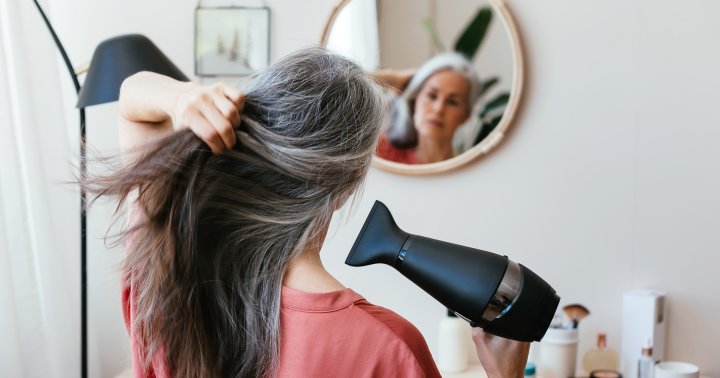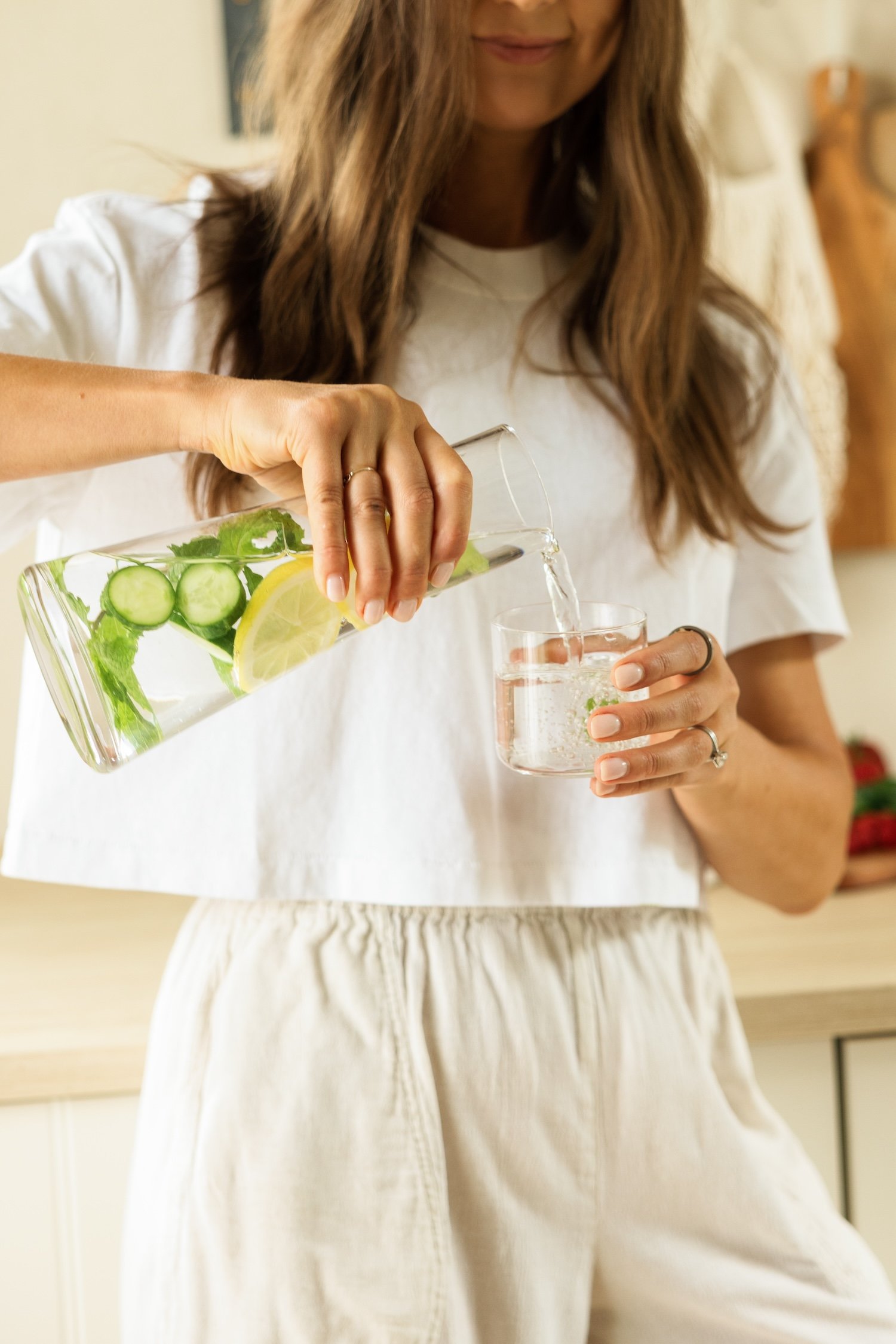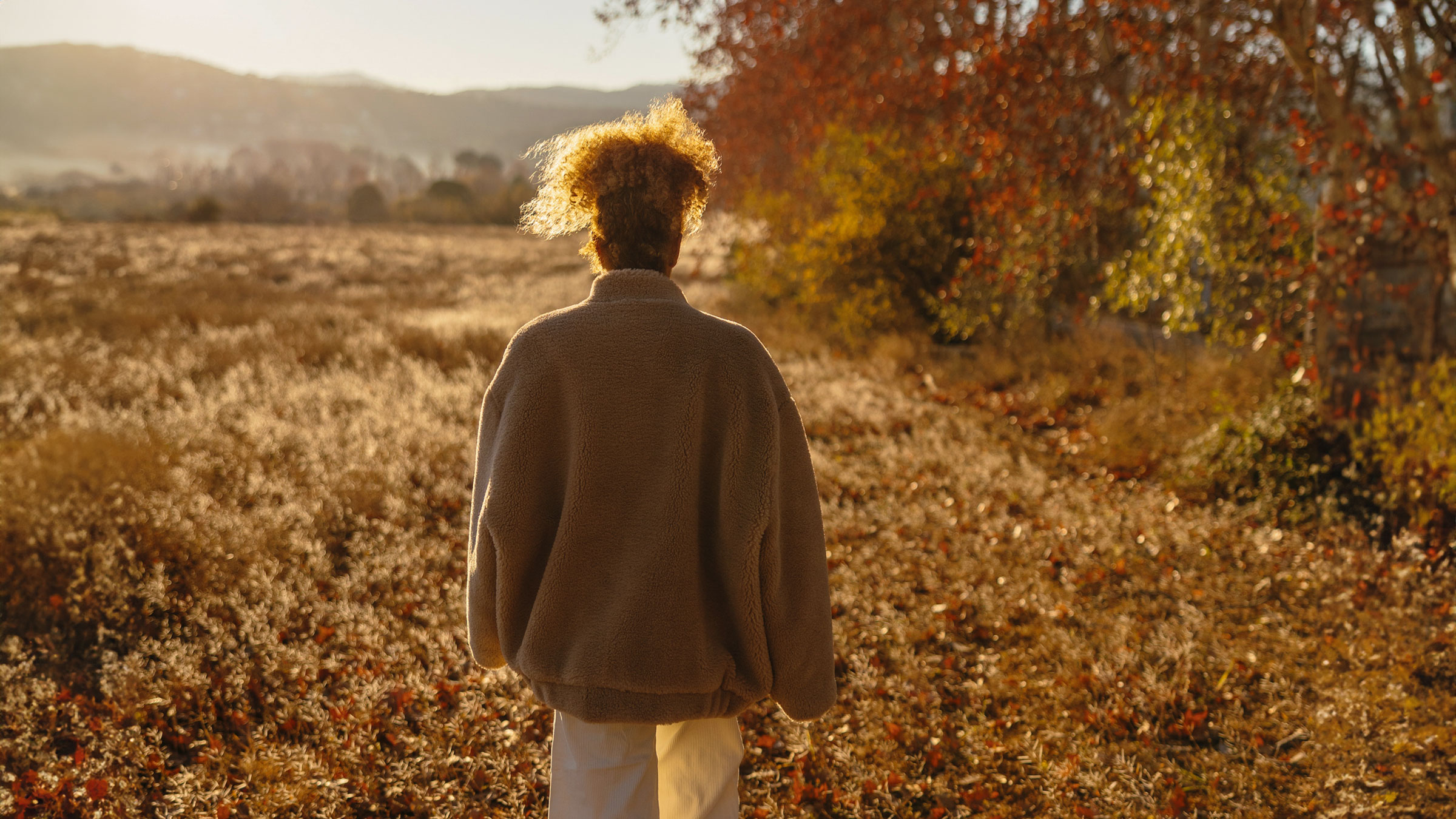Give Yourself a Foot Massage With These Simple Reflexology Techniques
Reflexology is an alternative healing method of massaging and applying pressure to points on the feet. The ancient practice of reflexology can have amazing benefits for your health and well-being, and – bonus – you can enjoy the benefits...

Reflexology is an alternative healing method of massaging and applying pressure to points on the feet. The ancient practice of reflexology can have amazing benefits for your health and well-being, and – bonus – you can enjoy the benefits with a foot massage!
Sadly, in our modern and somewhat sedentary lives, our feet do not get the attention they deserve and this can impact our overall well-being. A reflexology session, which includes a general evaluation of your feet, toes and ankles by a reflexologist, can help alleviate many ailments not directly linked to our feet!
While a general evaluation may reveal infections, corns, bunions and overall foot health quality, reflexology has also been linked in the treatment of anxiety, stress, pain, relaxation and sleep issues, and blood pressure, along with PMS and menstrual pain and many other conditions.
Most people love a good foot rub, but seeing a reflexologist may not be possible. The good news, you can receive the benefits of reflexology by taking the time to give yourself a foot massage. It’s simple, easy and fun and can be added to your self-care practice.
Read on to learn more about reflexology, including key benefits of this ancient technique, and steps on how you can give yourself a wonderful foot massage to relieve aches and pains.
Foot care can be a vital factor in functional pain reduction for those aches and pains that stem from misaligned or weak feet. Check out: Yoga for Feet: Learn 5 Key Benefits Plus How to Do It!
What is Reflexology?
The practice of reflexology has been around for centuries and is traced back to Traditional Chinese Medicine and Egyptian practices and is used to help alleviate a variety of ailments.
Reflexology uses pressure or finger techniques to massage and work areas of the feet that correspond to organs or specific body parts.
Reflexology is generally known as a technique on the feet, but it is also used on the hands and face, and is commonly offered as a massage service or from holistic practitioners.
Want to know more about getting a reflexology massage and other massage types? Here is Massage Therapy 101: Everything You Need to Know Before You Go
Reflexology theorizes that your organs and body systems are mirrored to sections of your feet. By applying pressure to key points on the feet and ankles, reflexology helps improve total body well-being and has many benefits, including:
Relieves anxiety and depression Improves sleep quality Reduces symptoms of PMS Improves circulationApply Reflexology Techniques With a Foot Massage
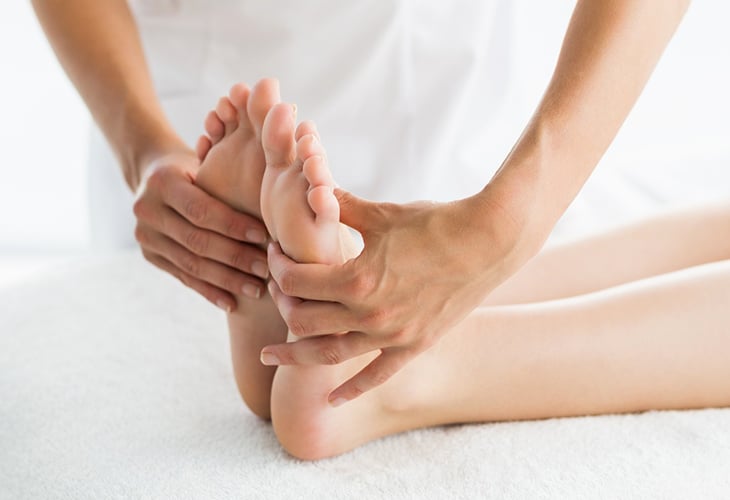
Professional reflexology sessions are a great way to relax and improve many aspects of your overall well-being, but you can also create a daily ritual to apply reflexology techniques on yourself with a foot massage at home. Hello, self-love.
Massaging your feet will stimulate the pressure points of the organs and systems in your body. As you apply pressure and give yourself a foot massage, notice. Do parts of your feet – like the inner arch or the ball of the foot – feel stiff? Are your ankles achy? Where is it sore or tender?
Once you become familiar with the sensations, and learn how much pressure to apply to your own feet, you will start to move energy and bring relief to the mirrored parts of your body. Read on for simple directions on how to massage your feet and learn what parts of feet are connected to the body.
Use This Quick Yoga Sequence to Increase Your Ankle Mobility
Here’s How to Give Yourself A Foot Massage
Before you start this self-massage practice, consult your physician if you suffer from circulatory problems, blood clots, leg or foot inflammation, epilepsy or any other concerns. If you are pregnant: note that certain reflexology points can induce labor. If you have any concerns, be sure to seek advice from a licensed medical doctor before proceeding.
Step 1:
Wash your hands and feet, or take time to soak yourself in a hot bath.
Step 2:
Find a comfortable spot to sit or retreat to your sacred space. Create a relaxing environment – play soothing music, turn down the lights or adjust the space in whatever way looks of feels best for you.
Step 3:
Grab your favorite lotion or massage oil – completely optional! – and use both hands to blend the lotion into one foot.
Step 4:
Use your fingers and apply light to moderate pressure with your fingers on the bottom of the foot and your thumb holding the top for leverage. Switch the position throughout the massage with fingers on the bottom and thumb at the top.
Step 5:
Start at the toes and rub each toe at the pressure level that feels right for you. Let your fingers get in between the toes and massage the area around the toes. Gently grab and do a light pull on each toe; then, rub underneath each toe. In reflexology theory, the toes are connected to the head and neck area of the body.
Step 6:
Work your way down the middle of the foot to the heel in a circular motion or by kneading your fingers into the foot. As you give yourself a foot massage, only do what feels good to you! In reflexology theory, the middle of the foot is said to be connected to the stomach area of the body and the heel of the foot is connected to the back of the legs and lower stomach.
Step 7:
Once you finish massaging the bottom of the foot, move to the top of the foot and work from the toes to the ankle. The top of your feet and ankles are connected to your lungs and the areas of your back and chest.
If you find any tender spots, spend a little more time in those areas and apply more or less pressure depending on your comfort level. Feel free to change up the technique as you go and honor your body and what feels best for you.
Step 8:
Move to the next foot and follow the steps above and spend three to five minutes per foot.
Alternative Ways to Give Yourself a Foot Massage
If you are unable to massage your own feet, here is another way to give yourself a quick bottom-of-the-foot massage. Grab a tennis ball or golf ball and place it on the floor. Stand or sit and move your foot over the ball and apply as little or as much pressure as you want.
This is a great way to practice foot massage if you have mobility issues or only have time for a quick massage.
Foot or Ankle Injury? These 7 Chair Yoga Poses Are Just for You
Apply These Reflexology Techniques In Your Foot Massage and Enjoy!
Your feet are a powerful source of connection to your entire body.
Practicing reflexology on yourself is a beautiful form of self-love. So, take time for yourself by giving yourself a regular foot massage and receive the added benefits of reflexology, including deep relaxation, stress relief and better sleep.
Attune To Your Feet and Then Feel Grounded and Rooted In Standing Postures
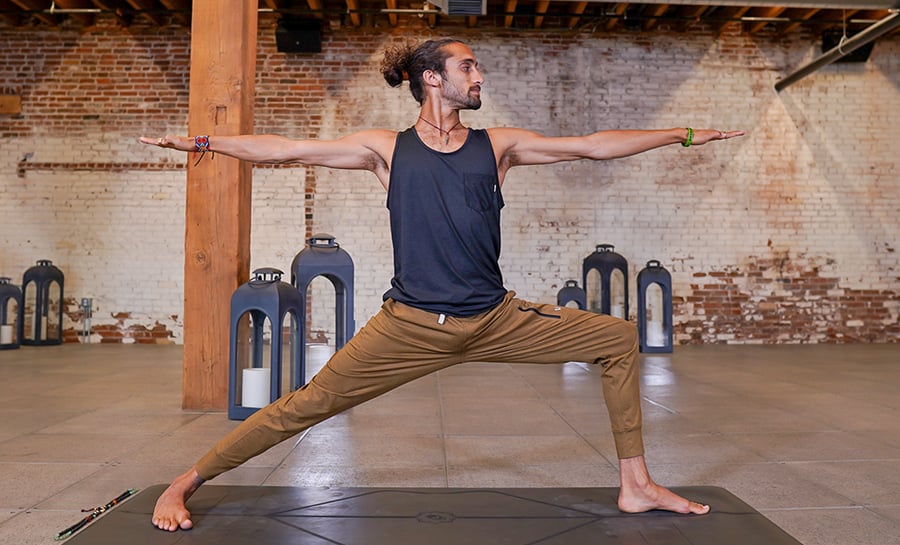
Yoga Class
With Alec Vishal Rouben
All Levels
After experiencing reflexology, your body will awaken. If you are feeling energized, try this YA Classes yoga sequence of standing postures to feel grounded and embodied.
All included information is not intended to treat or diagnose. The views expressed are those of the author and should be attributed solely to the author. For medical questions, please consult your healthcare provider.

 ShanonG
ShanonG 









